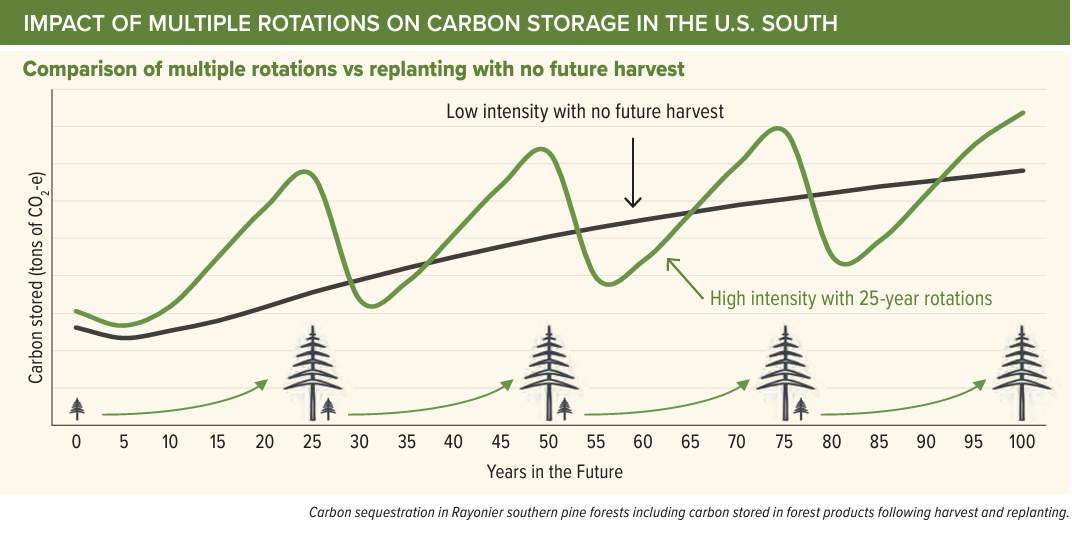Rayonier Sustainability Report: Carbon Storage in Forest Products
Originally published on Rayonier.com
When we harvest our trees, we remove a portion of the carbon contained in our forests. After our trees are harvested, we then replant our forests and start the process of growing trees and sequestering carbon all over again.
The carbon storage benefits of Rayonier’s forests continue even after trees are harvested, as carbon can remain stored for many decades within the end-use forest products made from such trees, including lumber, plywood, and engineered wood products.
As part of our carbon footprint analysis, we have estimated our 2022 harvest volumes by product and destination, as well as the resulting long-term storage benefits by category. The above chart illustrates the life cycle of carbon that remains stored in end-use forest products after the timber has left our forests based on the estimated half-life of the carbon stored in the various products made from our timber. This analysis is based on 2022 harvest activity and does not reflect the incremental benefit of successive rotation cycles. For more information on carbon storage over multiple rotation cycles, see our Carbon Report.
In the softwood timber-growing regions where we operate, the sustainable practice of harvesting and replanting trees results in a higher level of carbon sequestration versus simply letting the trees grow naturally—primarily due to the storage of carbon in end-use forest products.
The above graph compares two alternative scenarios of carbon storage in our forests and harvested wood products over a 100-year timeframe. One scenario assumes we plant, do not manage intensively, and do not harvest. The other scenario assumes multiple rotations—whereby we plant, manage intensively, and harvest every 25 years for loblolly and slash pine in the U.S. South.
Click here to learn more about Rayonier's sustainability efforts and explore the full report.



